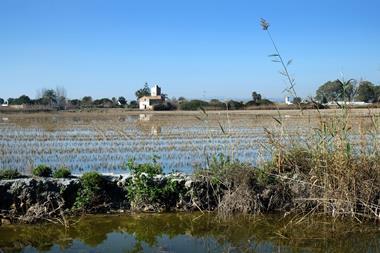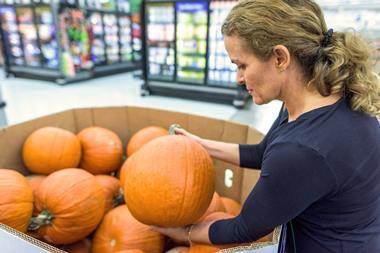The United States and Canada has traditionally been Chile’s biggest export market for fruit and vegetables, but its producers are doing everything they can to develop markets such as the UK
Chile exports two thirds of its fruit and vegetables and traditionally the US and Canada has been its biggest market, accounting for 39.3%.
With so many eggs in one basket, it is no surprise that producers are trying to develop other markets, particularly the UK.
As Asoex chairman of the board Ronald Bown explains: “The UK is the third country in terms of exports - taking 5.3% of what we export compared with the Netherlands, which takes 11.1%. But in terms of annual increases, the UK market grew 10.7% this year compared with Europe’s 2.5%.”
Producers, meanwhile, are doing everything they can to raise their game. Ignacio Cifuentes, MD at Huerto California, a tree nursery managed by major Chilean exporter Safex, highlights the work the nursery has done to increase avocado yields, for instance. By experimenting with different planting
densities, it has managed to increase it from 12 to 14 tonnes per hectare to 16 to 18. It is also testing and developing new varieties of avocados and citrus fruit
Chilean journalist Patricio Trebilcock agrees that there is huge scope for growth, but argues that branding needs to be stronger. “Chileans have been successful in befriending distributors and promoting at supermarket level, but they’re not yet reaching the heart of the customer. We need to get to the next stage.”
However, it is not an easy market to crack, concedes Bown. “The UK has been a very demanding market in terms of almost everything related to the fruit business, not only quality and consistency of supply, but also good practice. Its requirements are totally different from Europe. It was the first country where you saw buyers coming to Chile to check not only the fruit but the facilities, the way the fruit was being packed and everything relating to sanitary conditions.
“But now we’re used to all the requirements.We’re highly advanced in complying with regulations set by the supermarkets, ChileGAP (the equivalent of EurepGAP) and other technical protocols.”
And what about EDLP?
“You have to consider the equation between quality and price,” he says. “The UK demands a different quality and that of course means there’s a different price.” Chilean producers are realistic, he adds, “not just preoccupied with quality and volume”. However, he continues: “We don’t have the image of a country that is selling at low price. We haven’t had any problems with the supermarkets in the UK and have been growing our business with them in a very steady fashion.
“The main challenge, given that we’re supplying a number of markets, is the lack of harmonisation between the different criteria.”
At present, Chile’s main exports to the UK are grapes, red apples, plums, clementines, green apples, pears, peaches and blueberries.
This year has not been plain sailing. A severe frost hit superior grape varieties and apricots in September, damaging more than 50% of some crops.
However, producers are stoical. They are also realistic about the long-term potential of the UK market, says Bown. “We would like to see a third of our exports go to the US, a third to Europe and a third to Latin America and Asia. We think Asia will be our main market in the long term.”
Chile exports two thirds of its fruit and vegetables and traditionally the US and Canada has been its biggest market, accounting for 39.3%.
With so many eggs in one basket, it is no surprise that producers are trying to develop other markets, particularly the UK.
As Asoex chairman of the board Ronald Bown explains: “The UK is the third country in terms of exports - taking 5.3% of what we export compared with the Netherlands, which takes 11.1%. But in terms of annual increases, the UK market grew 10.7% this year compared with Europe’s 2.5%.”
Producers, meanwhile, are doing everything they can to raise their game. Ignacio Cifuentes, MD at Huerto California, a tree nursery managed by major Chilean exporter Safex, highlights the work the nursery has done to increase avocado yields, for instance. By experimenting with different planting
densities, it has managed to increase it from 12 to 14 tonnes per hectare to 16 to 18. It is also testing and developing new varieties of avocados and citrus fruit
Chilean journalist Patricio Trebilcock agrees that there is huge scope for growth, but argues that branding needs to be stronger. “Chileans have been successful in befriending distributors and promoting at supermarket level, but they’re not yet reaching the heart of the customer. We need to get to the next stage.”
However, it is not an easy market to crack, concedes Bown. “The UK has been a very demanding market in terms of almost everything related to the fruit business, not only quality and consistency of supply, but also good practice. Its requirements are totally different from Europe. It was the first country where you saw buyers coming to Chile to check not only the fruit but the facilities, the way the fruit was being packed and everything relating to sanitary conditions.
“But now we’re used to all the requirements.We’re highly advanced in complying with regulations set by the supermarkets, ChileGAP (the equivalent of EurepGAP) and other technical protocols.”
And what about EDLP?
“You have to consider the equation between quality and price,” he says. “The UK demands a different quality and that of course means there’s a different price.” Chilean producers are realistic, he adds, “not just preoccupied with quality and volume”. However, he continues: “We don’t have the image of a country that is selling at low price. We haven’t had any problems with the supermarkets in the UK and have been growing our business with them in a very steady fashion.
“The main challenge, given that we’re supplying a number of markets, is the lack of harmonisation between the different criteria.”
At present, Chile’s main exports to the UK are grapes, red apples, plums, clementines, green apples, pears, peaches and blueberries.
This year has not been plain sailing. A severe frost hit superior grape varieties and apricots in September, damaging more than 50% of some crops.
However, producers are stoical. They are also realistic about the long-term potential of the UK market, says Bown. “We would like to see a third of our exports go to the US, a third to Europe and a third to Latin America and Asia. We think Asia will be our main market in the long term.”



















No comments yet